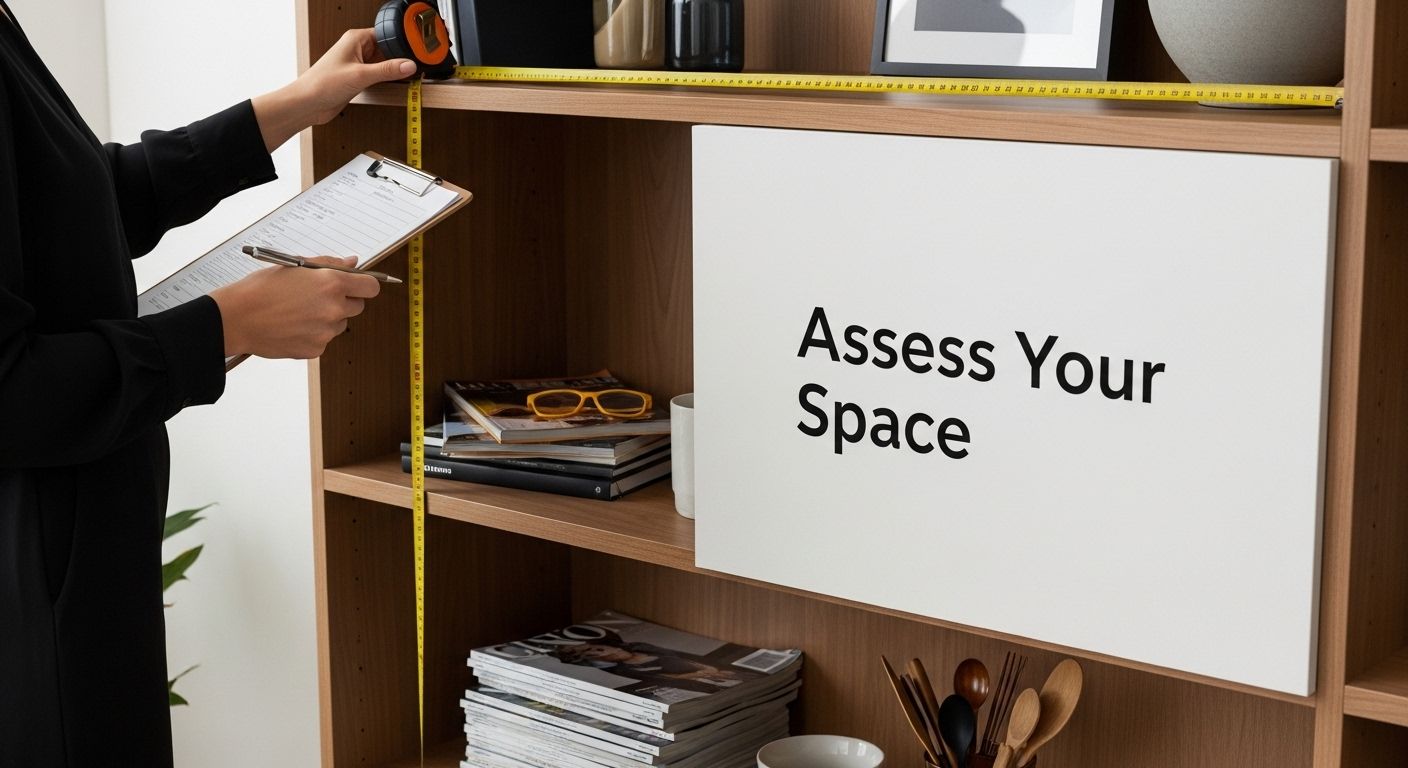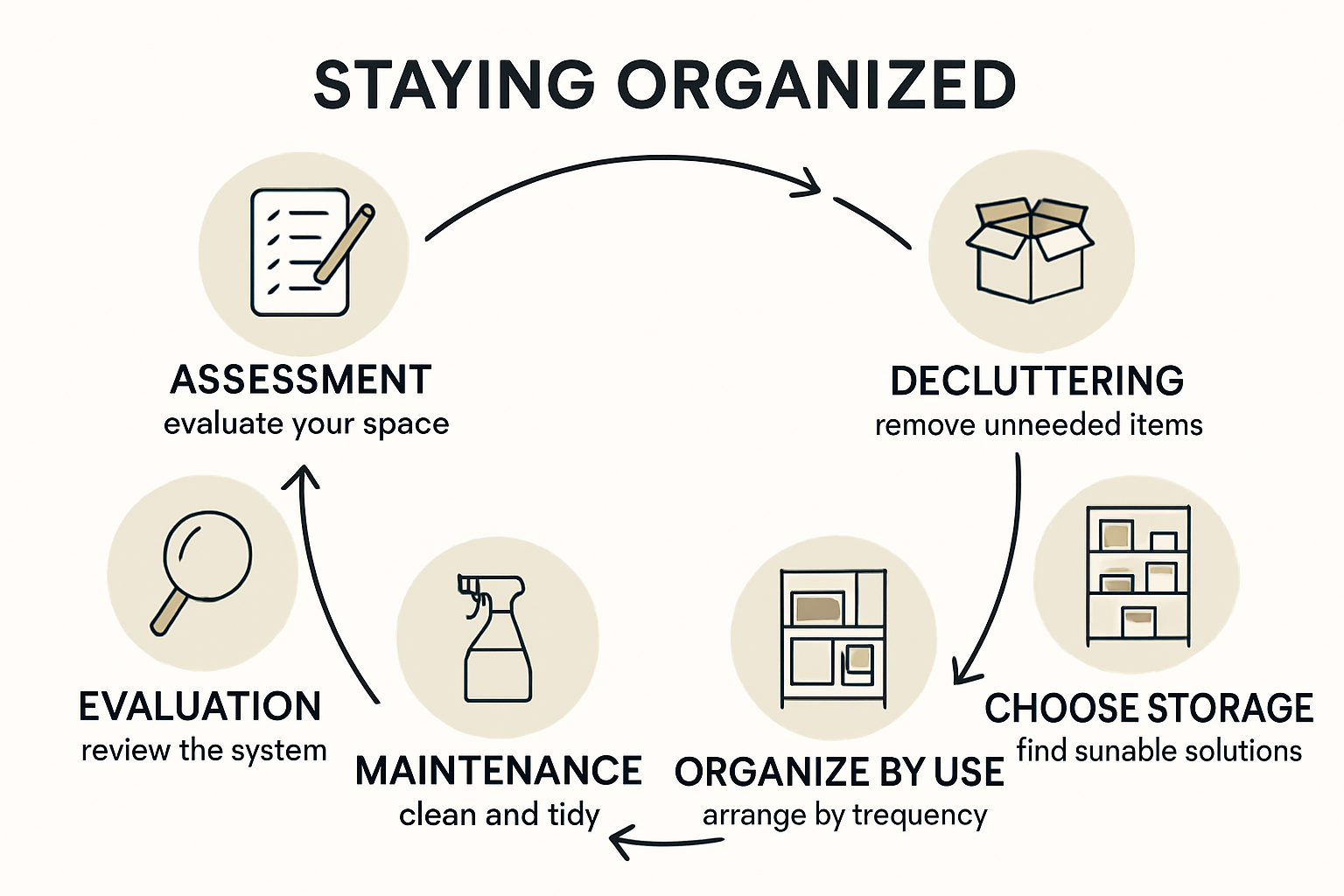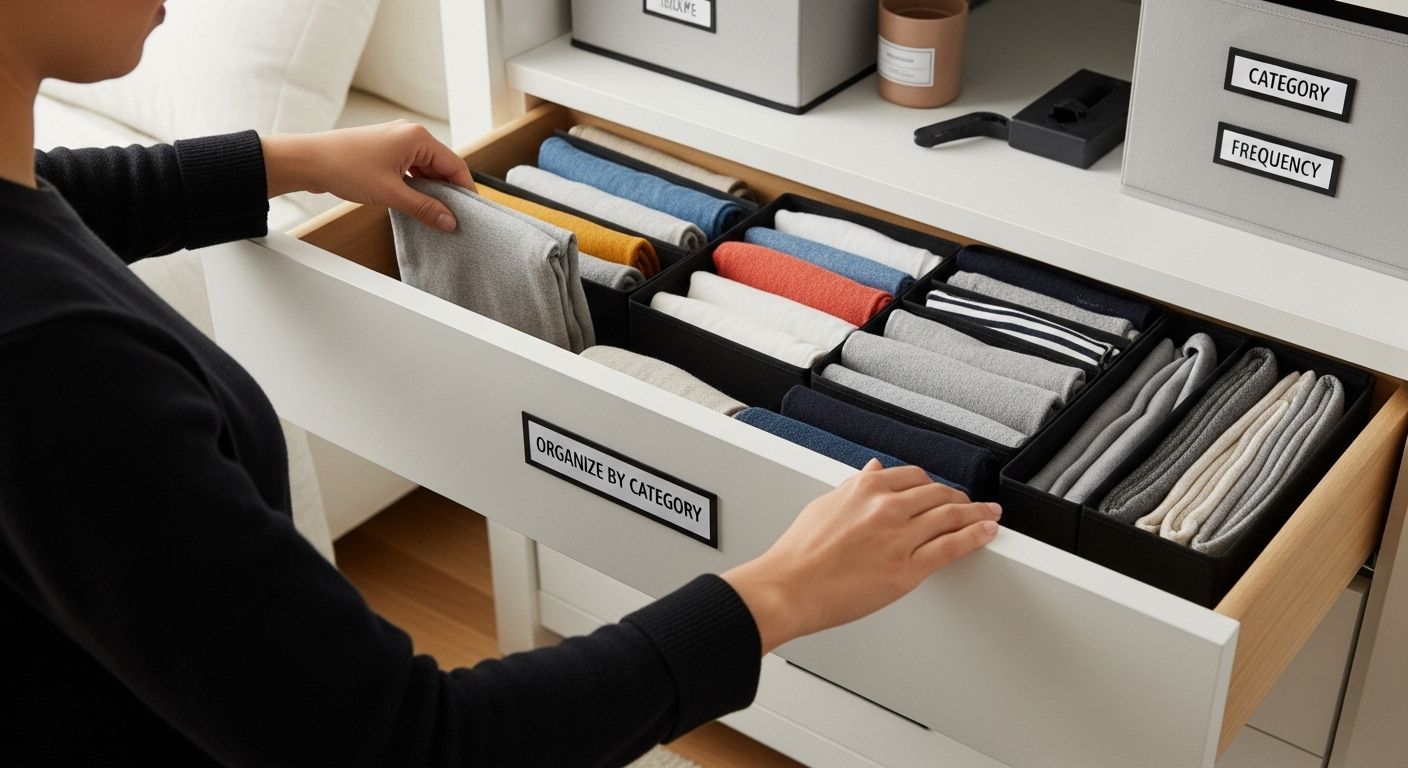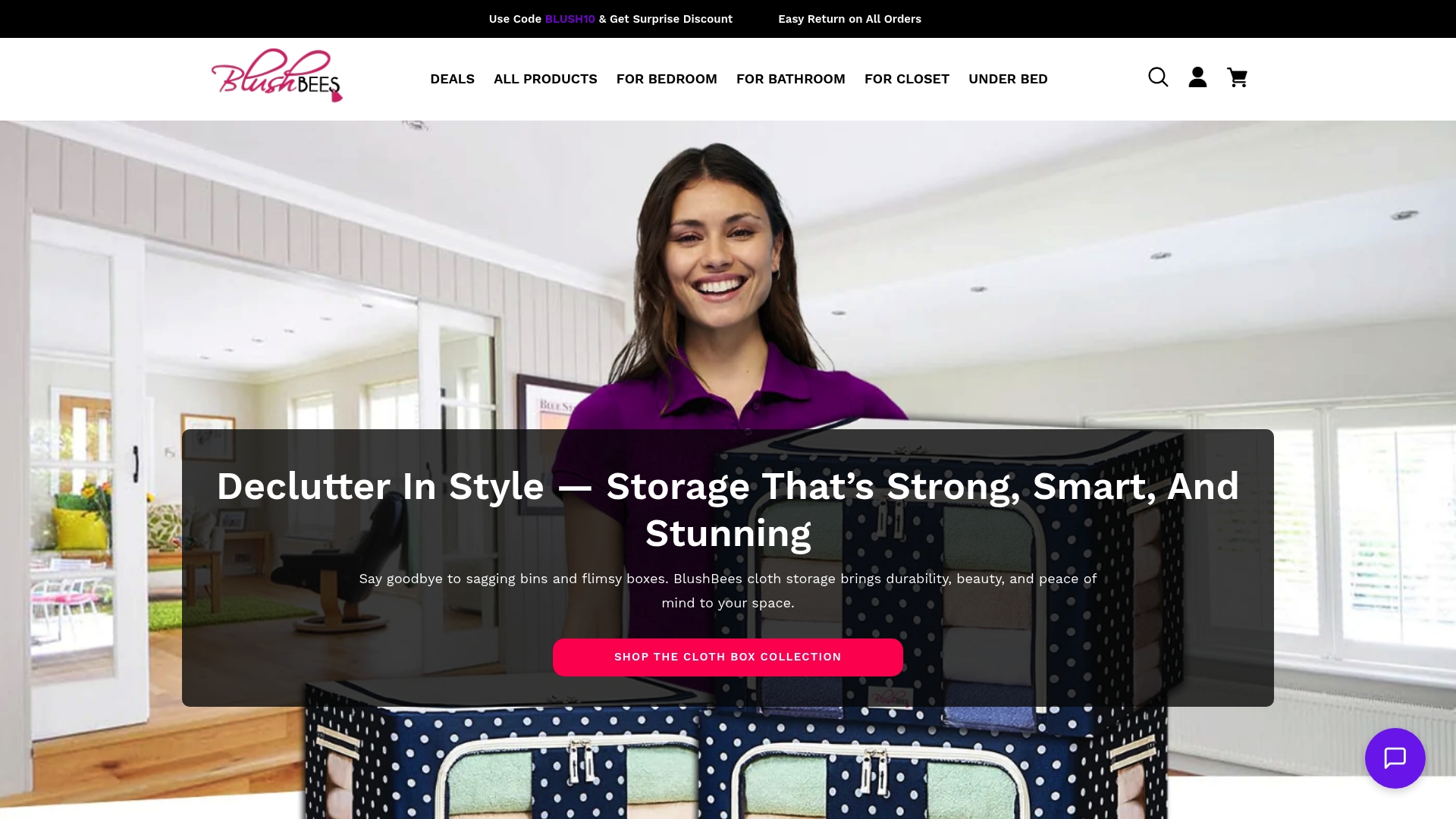

Organizing your home might sound like a massive project, especially when every room seems to collect its own little mountain of clutter. But check this out. Most people can bring order to their entire house with just 15 minutes a day, once the right system is in place. Turns out, the biggest impact comes not from endless cleaning sprees but from a few small changes and a smarter approach that actually fits your life.
Table of Contents
- Step 1: Assess Your Current Space And Needs
- Step 2: Declutter And Sort Your Belongings
- Step 3: Choose Stylish Storage Solutions
- Step 4: Organize Items By Category And Frequency Of Use
- Step 5: Implement A Maintenance Routine
- Step 6: Evaluate And Adjust Your Organization System
Quick Summary
Below is a quick reference summary of each main organization step. Use this table to plan your project pace and set realistic expectations for each phase.
| Step | Time Estimate | Key Outcome |
|---|---|---|
| 1. Assess Space & Needs | 30-60 minutes | List of clutter hotspots, measurements, priorities |
| 2. Declutter & Sort | 1-2 hours/room | Streamlined belongings, sorted by category |
| 3. Choose Stylish Storage Solutions | 30-60 minutes | Selected storage that fits space and design |
| 4. Organize by Category/Frequency | 1-2 hours/room | Intuitive zones based on use and access |
| 5. Implement Maintenance Routine | 15 min daily; | |
| 30-45 min weekly | Routines for daily reset and weekly review | |
| 6. Evaluate & Adjust System | Quarterly; 30 min | Targeted updates for ongoing organization |
| Key Point | Explanation |
|---|---|
| 1. Assess your space critically | Identify clutter hotspots and needs to create targeted organization strategies tailored to your lifestyle. |
| 2. Declutter mindfully | Sort belongings into categories: keep, donate, and discard to streamline possessions and create mental clarity. |
| 3. Choose stylish storage solutions | Select storage that matches your organizational needs while complementing your home’s aesthetic for functional beauty. |
| 4. Organize by usage frequency | Group items logically and store frequently used ones in easy-to-reach locations to enhance efficiency in daily tasks. |
| 5. Establish a maintenance routine | Develop daily and weekly habits to keep your organized spaces functioning smoothly and prevent clutter buildup over time. |

Step 1: Assess Your Current Space and Needs
Organizing your home begins with a strategic assessment of your current living environment. The key to effective storage solutions is understanding the unique landscape of your space, identifying clutter patterns, and recognizing the specific needs of each area. This initial step helps you create a targeted approach that transforms chaos into carefully curated order.
Start by walking through each room with a critical eye, taking note of areas where items accumulate and spaces feel overwhelmed. Pay attention to those spots where random objects tend to gather - kitchen counters, entryway tables, bedroom floors. These are your primary organization hotspots. Grab a notebook and document the specific challenges in each space. Are magazines piling up near the sofa? Do kitchen utensils crowd your drawers? Understanding these patterns will guide your storage strategy.
Measurement is crucial during this assessment. Break out a measuring tape and record the dimensions of shelves, closets, and potential storage areas. Take detailed notes on the exact width, depth, and height of spaces where you want to implement storage solutions. This precision prevents future frustration and ensures that any storage products you select will fit perfectly. Learn more about maximizing your space with our comprehensive guide to intelligent storage planning.
Consider your lifestyle and daily routines as you evaluate your space. A busy professional might need different organization strategies compared to a work-from-home parent or a student. Think about the items you use most frequently and how you can make them more accessible. The goal is not just to hide clutter but to create a system that supports your unique way of living. Effective organization anticipates your needs and makes daily tasks smoother and more intuitive.
By the end of this assessment, you should have a clear blueprint of your space’s challenges and potential. Your notes, measurements, and observations will serve as a roadmap for the stylish storage solutions to come. Remember, organization is not about perfection but about creating a functional environment that reduces stress and enhances your daily experience.
Step 2: Declutter and Sort Your Belongings
Decluttering is the critical foundation of any successful organization strategy. This step transforms your space from overwhelmed and chaotic to streamlined and purposeful. The goal is not just to remove items but to create a mindful selection of possessions that genuinely serve your current lifestyle and bring you joy.
Begin by creating three distinct sorting categories: keep, donate, and discard. Approach this process systematically by tackling one room or area at a time to prevent feeling overwhelmed. Start with spaces that tend to accumulate the most clutter, like closets, kitchen drawers, or home office areas. Hold each item and ask yourself a simple but powerful question: Have I used this in the past year? Does this item bring me genuine value or happiness? Be brutally honest with yourself.
Discover expert decluttering techniques that can help streamline your process and make decision-making easier. As you sort, create a temporary staging area where you can place items in their respective categories. For clothing, a good rule of thumb is to remove anything you haven’t worn in the last 12 months. With documents and paperwork, scan important papers and discard physical copies that can be digitally preserved.
To help you approach decluttering systematically, here is a checklist table summarizing the key tasks and questions to guide your sorting process.
| Decluttering Task | Guiding Question | Suggested Action |
|---|---|---|
| Sort items by category | Have I used this in the past year? | Keep, Donate, Discard |
| Review one area at a time | Does this bring me genuine value or happiness? | Move to next area when done |
| Clothing review | Have I worn this in the last 12 months? | Keep or Donate/Discard |
| Paperwork/documents | Can this be scanned and kept digitally? | Scan and Discard if possible |
| Emotional items | Am I keeping this out of guilt or obligation? | Consider letting go |
| Create a staging area | Where does this item best fit among the categories? | Place in temporary zone |
| Donate/recycle responsibly | Is this item in good/useable condition? | Donate or Recycle/Discard |
Consider the emotional weight of your belongings. Sometimes we keep items out of guilt, nostalgia, or a sense of obligation. Recognize that letting go of physical objects does not diminish the memories associated with them. Donate items in good condition to local charities, sell valuable pieces online, and responsibly recycle or dispose of items that cannot be reused.
By the end of this process, you should have significantly reduced the volume of your possessions. Your kept items should now feel intentional and meaningful. A well-decluttered space not only looks cleaner but also reduces daily stress and creates mental clarity. Remember, decluttering is not a one-time event but an ongoing practice of mindful consumption and organization.
Step 3: Choose Stylish Storage Solutions
Selecting the right storage solutions transforms your organization strategy from functional to fabulous. This step is about finding pieces that not only manage your belongings efficiently but also complement your home’s aesthetic and personal style. The key is balancing practicality with visual appeal, ensuring that your storage solutions feel like intentional design elements rather than mere utility items.
Start by matching storage solutions to the specific needs you identified during your space assessment. Consider the visual weight and color palette of potential storage pieces. Neutral tones like soft grays, whites, and warm wood finishes offer versatility and can seamlessly integrate with various design styles. For more adventurous spaces, consider storage containers with geometric patterns or bold accent colors that make a statement while maintaining organizational functionality.
Explore innovative storage strategies that maximize both style and efficiency. Prioritize multi-functional pieces that serve dual purposes. A beautiful ottoman with interior storage, floating shelves with integrated drawer systems, or stackable boxes that can be arranged in creative configurations offer smart solutions for modern living spaces. Look for designs that feature clean lines, minimal hardware, and materials that reflect your personal aesthetic.
Pay attention to the specific requirements of different areas in your home. Kitchen storage might demand clear containers for easy ingredient visibility, while bedroom solutions could benefit from soft-close drawers and humidity-resistant materials. Modular systems that can be easily reconfigured provide flexibility as your storage needs evolve. Consider transparent or semi-transparent containers for craft supplies, pantry items, and office materials to maintain visual organization and make locating items quick and effortless.
By the end of this process, your storage solutions should feel like a natural extension of your home’s design. Each piece should serve a clear purpose while contributing to the overall visual harmony of your space. Remember that great organization is not about perfection but about creating systems that make your daily life more comfortable and enjoyable.
Step 4: Organize Items by Category and Frequency of Use
Organizing your belongings by category and usage frequency transforms your storage system from basic to brilliant. This strategic approach ensures that every item has a logical home and can be accessed with minimal effort. The goal is to create an intuitive system that reflects how you actually live and work, making daily routines smoother and more efficient.
Begin by grouping similar items together. Kitchen tools belong with kitchen tools, office supplies with office supplies. Within these categories, create subcategories based on frequency of use. Think of it like a personal accessibility hierarchy. Items you use daily should be stored in prime, easy-to-reach locations. Seasonal items or rarely used objects can be stored in less convenient spaces like top shelves or storage bins. This method prevents constant rearranging and reduces daily frustration.
Unlock smart organization strategies that make maintaining order second nature. Implement a simple color-coding or labeling system to enhance your categorization. For instance, use colored dots or tags to indicate usage frequency: green for daily items, yellow for weekly items, and red for seasonal or annual items. This visual system provides an instant reference point and helps maintain your organizational structure over time.
Consider creating designated zones in each room that align with your lifestyle. A home office might have a writing zone, a digital zone, and a reference zone. A kitchen could have a cooking zone, a baking zone, and a quick-prep zone. By thinking about your space in functional clusters, you create an intuitive organization system that feels natural and supports your daily activities.
By the end of this process, you should have a clear, logical system where every item is categorized, accessible, and purposefully stored. Your newly organized space will feel more spacious, less stressful, and significantly more functional. Remember that organization is an ongoing practice. Periodically review and adjust your system as your needs and lifestyle evolve.

Step 5: Implement a Maintenance Routine
Creating a sustainable organization system requires more than initial setup. A maintenance routine transforms your hard-earned organizational progress into a lasting lifestyle. This step is about developing habits that keep your carefully curated spaces functioning smoothly and preventing future clutter accumulation.
Daily maintenance should take no more than 15 minutes. Establish a simple end-of-day reset ritual where each room returns to its organized state. Place items back in their designated zones, clear surfaces, and do a quick visual scan for anything out of place. This small investment prevents overwhelming buildup and maintains the organizational momentum you’ve worked to create. Consider setting a specific time each evening, perhaps after dinner or before bedtime, to complete this quick reset.
Discover expert maintenance strategies that make organization feel effortless. Develop a weekly deep dive routine where you spend 30-45 minutes reviewing and refreshing your organizational systems. This might involve checking storage containers, reassessing category boundaries, and making minor adjustments. Use this time to rotate seasonal items, clean storage spaces, and ensure your systems continue to serve your evolving needs.
Create accountability by tracking your progress. Consider using a simple habit tracker or digital app that allows you to mark daily and weekly organizational tasks. Visual tracking helps reinforce new habits and provides motivation as you see consistent progress. Remember that perfection is not the goal. Some weeks will be more successful than others, and that’s completely normal. The key is consistent, gentle effort and a commitment to maintaining the organizational framework you’ve built.
By the end of this process, organization becomes a natural part of your routine rather than a dreaded task. Your spaces will feel consistently calm, functional, and tailored to your lifestyle. The small, consistent actions you take will prevent future clutter and maintain the sense of peace and efficiency you’ve worked hard to create.
Step 6: Evaluate and Adjust Your Organization System
Evaluating and adjusting your organizational system is the critical final step that transforms a good organization strategy into an exceptional, personalized approach. This ongoing process ensures that your storage solutions continue to serve your evolving lifestyle and needs. Think of it as a periodic health check for your home’s organizational infrastructure.
Schedule a quarterly review of your entire organizational system. During this assessment, critically examine how your current setup is working. Are there areas where items consistently seem to pile up? Do you find yourself struggling to maintain the system you’ve created? These are clear signals that some adjustments are necessary. Pay attention to the friction points in your daily routine. If you’re repeatedly finding it challenging to return items to their designated spaces, the problem might be with the system, not your discipline.
Explore advanced organization strategies that can help you refine your approach. Consider taking photographs of your organized spaces to provide an objective view. Sometimes visual documentation reveals patterns and challenges that aren’t immediately apparent during daily use. Look for signs of system strain: overflowing containers, items stored in multiple locations, or storage solutions that no longer match your current lifestyle and needs.
Be willing to make incremental changes rather than dramatic overhauls. Small, targeted adjustments are often more sustainable than completely dismantling your existing organization system. Maybe a drawer divider needs repositioning, or a storage container requires relabeling. Listen to your intuition and be honest about what truly works for you. The most effective organizational system is one that feels natural and supports your unique way of living.
By the end of this evaluation, you should have a clear understanding of your system’s strengths and potential improvements. Your organization strategy becomes a living, breathing framework that adapts with you. Remember that perfection is not the goal. The objective is creating a system that reduces stress, saves time, and brings a sense of calm and control to your living spaces.
Transform Your 2025 Organization Goals Into Stylish Reality
Are you tired of cluttered bedrooms and overflowing drawers even after following every organizing tip? The article touched on common frustrations: stacks of clothes with nowhere to go, unappealing storage that disrupts your decor, and the ongoing challenge of making organization part of your everyday life. At BLUSHBEES, we understand how difficult it can be to find storage that actually works and looks beautiful at the same time. That is why our Bedroom Storage collection blends modern style with smart function, helping you turn your assessment and decluttering efforts into lasting order.

Ready for solutions you will be proud to show off? Visit https://blushbees.us to explore elegant organizers, durable dividers, and exclusive discounts on featured storage. Make your next organizing step count — discover this week’s special offers on our Deal Of The Week page before popular items sell out. Bring order and style to every corner of your home today.
Frequently Asked Questions
How do I assess my space before organizing?
Begin by examining each room critically, noting areas where clutter accumulates and items feel overwhelming. Document specific challenges and take measurements of potential storage spaces to guide your organization strategy.
What are effective methods for decluttering?
Create three sorting categories: keep, donate, and discard. Tackle one area at a time and be honest about whether each item is useful or brings joy. Use the one-year rule for clothing and scan important documents before discarding physical copies.
How can I choose stylish storage solutions that complement my home?
Select storage pieces that match your home’s aesthetic by considering visual weight, color palette, and functionality. Opt for multi-functional items like ottomans with storage or modular systems that can be adjusted as your needs change.
What regular maintenance practices can keep my organized spaces clutter-free?
Establish a daily 15-minute reset routine to return items to their designated spots and a weekly review to refresh your organization systems. Use a habit tracker to maintain accountability and foster a lasting organizational lifestyle.
Recommended
- Shelf Organization Ideas for Stylish and Smart Storage 2025 – BLUSHBEES USA
- Organizing Cleaning Supplies: Smart Storage Ideas for 2025 – BLUSHBEES USA
- Home Office Organization Ideas for Stylish and Tidy Spaces 2025 – BLUSHBEES USA
- Smart Home Organization: Stylish and Simple Solutions – BLUSHBEES USA



